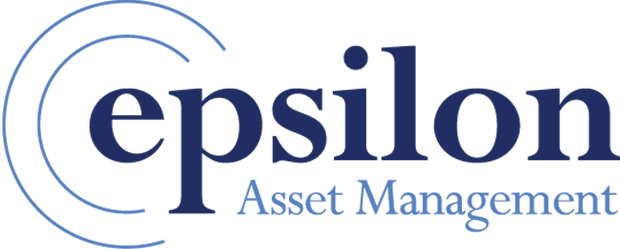Froth // Discipline
The nature of a cycle is a repeatable phenomenon, where a trend undergoes map-able deviations from its long-term average. A sin curve is a classic example. Adaptive markets key in on the economic cycle. This leads to a recursive phenomenon known as the market cycle. This cycle sucks many into a loser’s proposition: trying to outfox a world of foxes. Right now, some say we are in that phase of the cycle. You know, when caution has been replaced by ebullience, leading to overreach. Anyone who follows financial journalism can reel off the memes du jour supporting this view. This is the market’s battleground ideology in 2020.
Stepping back, humans are more often wrong than right in prognosticating market cycles. Just as pundits are so often wrong modeling political trend. We often forget disconfirming evidence. We instead reach for clairvoyance. It feeds into a certain myth that market participants want to believe. Prognosticators are generally held to a very loose standard. Unlike the timestamp of written word, timing is essential with investing. As such, we much prefer to follow PnL than newsletters.
Some have been saying we’ve been in that phase for quite some time. Those who have bet on it (especially with other’s capital) have surely lost. Of course, these losses aren’t set in stone. When outcomes have significant skew, losses look bleakest before they turn. But the final letters are being chiseled in by the day.
We should note that there are two diametric sides to this situation, arranging themselves bimodally. We have a persistent troop of chicken-littles who rose to prominence in the wake of the financial crisis (a dwindling company), and a new wave of techno-optimists that flout traditional caution with an abandon last felt at the end of the 20th century. Euphoria is certainly not the operative emotion at play, but there are certainly pockets of it being flaunted. Fear mongering still exists, being fed by the most quixotic examples. This dynamic seems increasingly paranoia driven, tapping into new boogeymen, colorful personalities, channeled through novel mediums.
Cycles become hazy and can stretch into bubble territory. Across our bi-modal contingency, the “b” word is both a pariah and the second coming. Depends on who you ask. Setting aside who is right or wrong, one thing we can deduce from prior manias is how hidden feedback loops are central to their growth. In 2008, we saw novel channels for credit growth lead to distortions in credit risk. These distortions fed back into asset prices, further exacerbating their moves. This dynamic failed to course correct in part because of novel securitization. This pattern is classically vicious; some dare say malignantly addictive when the stars align.
I must caveat, we’re not in the business of extrapolating cycles. But we are students of cyclical phenomenon. Mean reversion is by our estimation, the most powerful force in investing. When combined with human behavior, it drives the yawning gap between long-term average returns and middling average-investor outcomes.
Out here, we’re worried by signs of froth but hardly betting on it. Betting on it, in many ways, is what counts. We recognize how anecdotal many of these signs may be, and how the human mind is so very adept at fooling itself through anecdote. One of our firm’s central principles is to avoid reactions to anecdotal fear. As investors, it is perhaps our greatest strength and a laughable weakness; like a comic-book character’s talismanic trait. That principle is anchored through an adherence to discipline. The discipline requires fundamental examination rather than amygdallic correction.
The analogy we use is in shaving. Invariably one gets nicked. Most reach for tissue paper, placing it on the cut, cauterizing the wound. Our investment process refuses to allow this. We instead redouble our effort on form-correcting technique. This occasionally leads to some blood dribbling down our cheek, which may not be congenial. But that stigma is paramount to fix the form which led to the nick in the first place.
And so, when we see froth, or signs and anecdotes of froth, or patterns which could be extrapolated as froth, we don’t react. We won’t cauterize our portfolio if some turbulence leads to a nick. We improve the steadiness of our hand by re-underwriting our form. Right now, we are looking for those incipient feedback loops which can stymie our assessment of risk. Through this, we’ll be better equipped to brace the whirlwind when it comes. It’s a lengthier fix that requires more foresight. Its not as satisfying as reaching for the stars and resolving to go to cash before (if) the shoe drops. But it’s the prudent choice. Ultimately, that foresight can only be nurtured through the realization that we don’t have the option to cauterize. That’s true discipline in the face of froth.
—-
The information contained in this article was obtained from various sources that Epsilon Asset Management, LLC (“Epsilon”) believes to be reliable, but Epsilon does not guarantee its accuracy or completeness. The information and opinions contained on this site are subject to change without notice.
Neither the information nor any opinion contained on this site constitutes an offer, or a solicitation of an offer, to buy or sell any securities or other financial instruments, including any securities mentioned in any report available on this site.
The information contained on this site has been prepared and circulated for general information only and is not intended to and does not provide a recommendation with respect to any security. The information on this site does not take into account the financial position or particular needs or investment objectives of any individual or entity. Investors must make their own determinations of the appropriateness of an investment strategy and an investment in any particular securities based upon the legal, tax and accounting considerations applicable to such investors and their own investment objectives. Investors are cautioned that statements regarding future prospects may not be realized and that past performance is not necessarily indicative of future performance.

